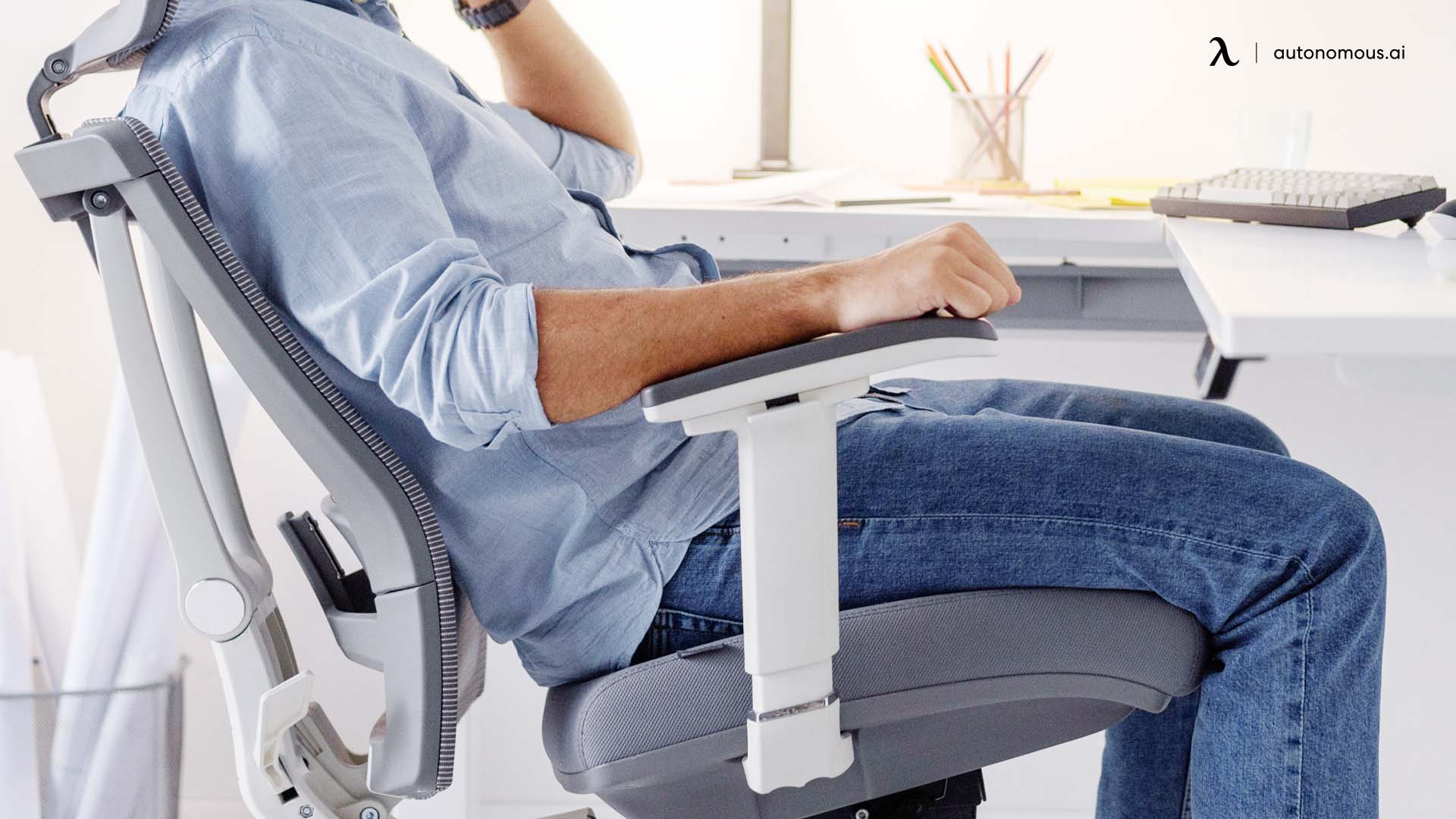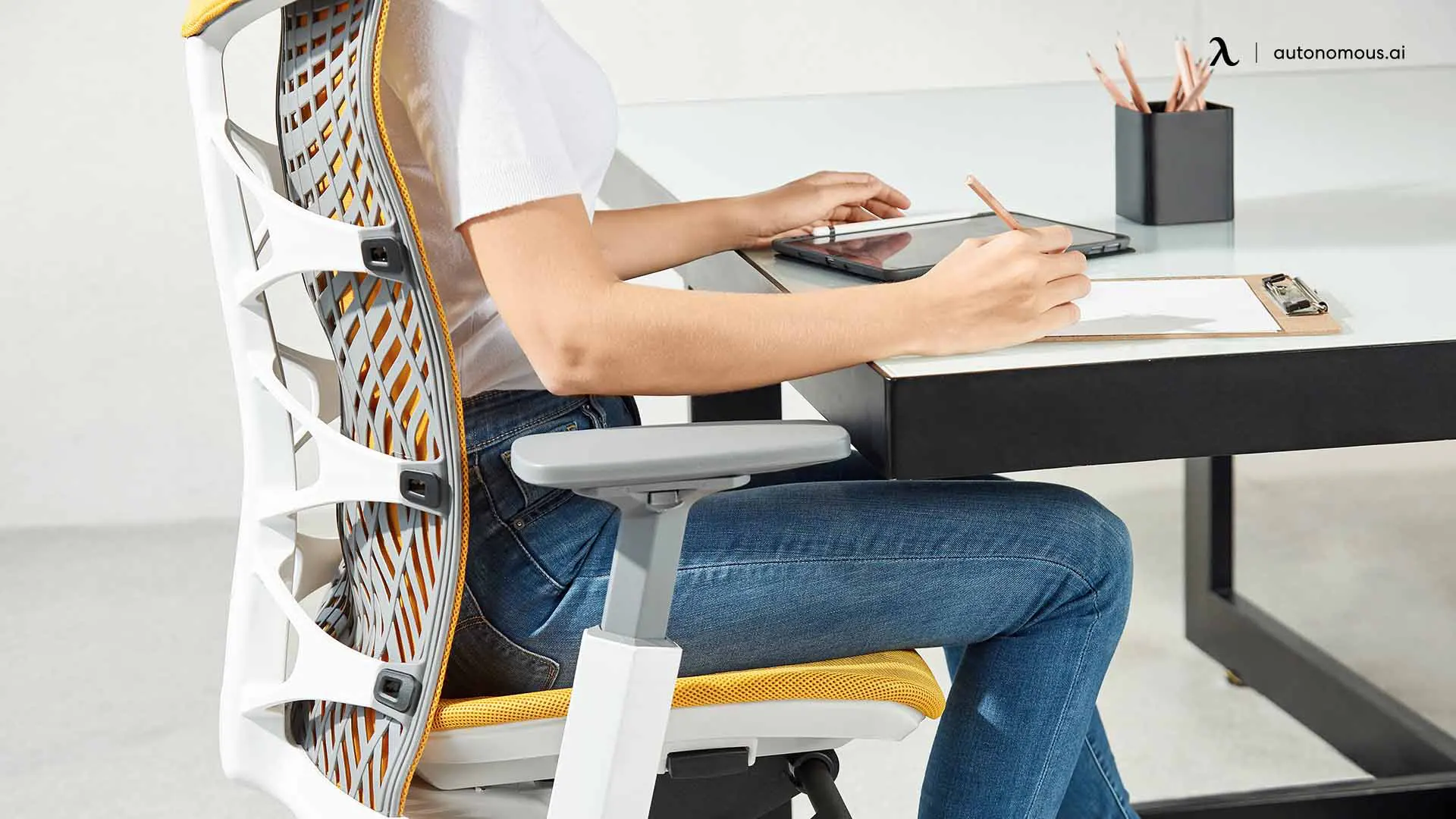
Table of Contents
It is relatively common for low back pain to be caused by anterior pelvic tilt. There is a strong recommendation against self-diagnosis and therapy. In the event of persistent or severe pain, you should be evaluated, and the therapy should be supervised accordingly. The spine and lower limbs meet at the pelvis, which is one reason you end up sitting with an anterior pelvic tilt. Four muscle groups maintain the pelvis's normal position when sitting in your office chair: hip flexors, hip extensors, anterior abdominals, and low back extensors.
Understanding how anterior tilt occurs is pretty straightforward and shows you how to fix anterior pelvic tilt while sitting. In order for the pelvis to rotate downward, the upper part has to rotate downward. The anterior pelvic tilt sitting position when seated in your ergonomic chair process will be as follows:
- Anterior abdominal weakness
- Flexors of the hips are tight
- Hip extensors are weak
- Low back extensors are tight
On the other hand, you can easily figure out how posterior tilt occurs. It is more complicated to deal with lateral tilt. It is possible to identify the source of tilt by testing the strength and length of these muscle groups. A treatment plan will then be developed accordingly. Various exercises can be performed in a variety of ways, even out of your computer ergonomic chair, without going into details:
- Curl the trunk to strengthen the anterior abdominals
- As a test and a therapy, double straight leg raises
- Curl your abdominals while sitting laterally
- Stretching hip flexors using the Thomas maneuver
- Stress on the hip flexors while lying on the couch
- Sitting, touch your toes to stretch your lower back
- Strengthen hip extensors with prone leg raises
Are There Any Exercises That Can Fix Anterior Pelvic Tilt?
In the beginning or during acute pain, exercising unsupervised is not recommended. Resting for a few days is usually helpful in managing pain with the right computer accessories. Unless you have postural awareness and are aware of your pelvis, there are no exercises that will guarantee a posterior rotation when you are in an anterior tilt. Since you don't have muscular awareness or control in this situation, any effort you make to achieve posterior rotation will be fake, using compensatory muscles that are incapable of restoring dynamic control.
How to Train an Anterior Pelvic Tilt for Neutral Posture?
An anterior tilt can be corrected by exercising, stretching, and massaging. An anterior tilt can be corrected at any time by performing the following standing desk exercise:
- Choose a sturdy table and sit on the edge.
- Your legs should hang off the table at the knees as you lie back on it.
- As you bend your leg toward your chest, hold it under your knee and pull it in toward you.
- Repeat with the other leg.
Anterior Pelvic Tilt Fixes
Correcting the condition with a proven medical procedure is impossible, but one can try home-based care. The ultimate fix for an incorrect anterior pelvic tilt sitting posture can be achieved through physical exercises that involve a lot of stretching. To reap the full benefits of the exercises, however, one must practice them consistently. Massage can also be used to correct the condition, but it must be combined with physical exercise and stretches.

Strength Physical Exercises
You can correct pelvic tilt with exercises on desk accessories or gym equipment developed by scientists and fitness therapists. It was, however, the result of many trials and errors involving many people with the disease. Even though these exercises are effective, the person's determination and consistency will make a big difference in getting the desired results. In addition, some stretches and strength exercises won't work. Your lower back pain will only be exacerbated because of them. We first need to show you how to lie down before we start with the individual exercises.
- Make certain that your entire back spine is in contact with the ground or floor while lying on your back. Grasp your buttocks with your heels and raise your knees.
- Stretch your hands out to the sides while standing with your feet together.
Here are the step-by-step instructions for each exercise. You should understand that none of the movements should be vigorous. In order to achieve the desired results, exercises should be performed slowly but regularly over an extended time. It should also be noted that these exercises are not reserved for those who suffer from anterior pelvic tilt but are performed daily by healthy people for their well-being as well.
Hamstring Exercises
Three types of muscles are found at the back, which are flexed with these stretches. Assuming the same posture for a long time usually causes these muscles to lose their flexibility. If nothing is done to correct it, the posture will develop over time and may become permanent. Further, people with weak hamstrings are likely to lose their stability. Taking the following steps will help you strengthen your hamstrings and correct anterior pelvic tilt."
- Take a seat at a table that is elevated.
- Stretch your left leg forward and straighten your back.
- Approximately 25 seconds should be spent in that position.
- Then repeat with the right leg.
Is It Possible To Correct Anterior Pelvic Tilt While Standing At Work?
You should place one foot on a step stool while standing at work to correct anterior pelvic tilt and not lock out your other knee, so you do not create a posterior pelvic tilt. The step stool can be placed under your feet while you are sitting so that your knees are higher than your hips so that you don't have to spend the whole day standing. Your pelvis will also tilt more posteriorly as a result of this.

Despite its importance as the prime mover, the gluteus maximus has two compartments that are so different from one another that they should be considered separate muscles. In order to engage your glutes, trainers suggest squeezing your butt cheeks together. There is little effect on pelvic rotation other than stabilizing the neutral pelvis through external hip rotation when posterior pelvis rotators are already in place since these fibers attach laterally to the greater trochanter of the hips.
Spread the word
.svg)








